An exhibition featuring over 120 works of renowned Chinese painter Xu Beihong opened at the artist's memorial museum in Beijing on Tuesday, after a massive renovation work that lasted for nine years.
The new Xu Beihong Memorial Museum covers an area of 10,885 square meters, three times bigger than the former, with a collection of 2,416 art works which will be exhibited on a rotation basis.
Xu's masterpieces, including "Running Horse", "Tian Heng and his 500 Retainers," and "Silly Old Man Moves a Mountain," are among the first batch of works on display.
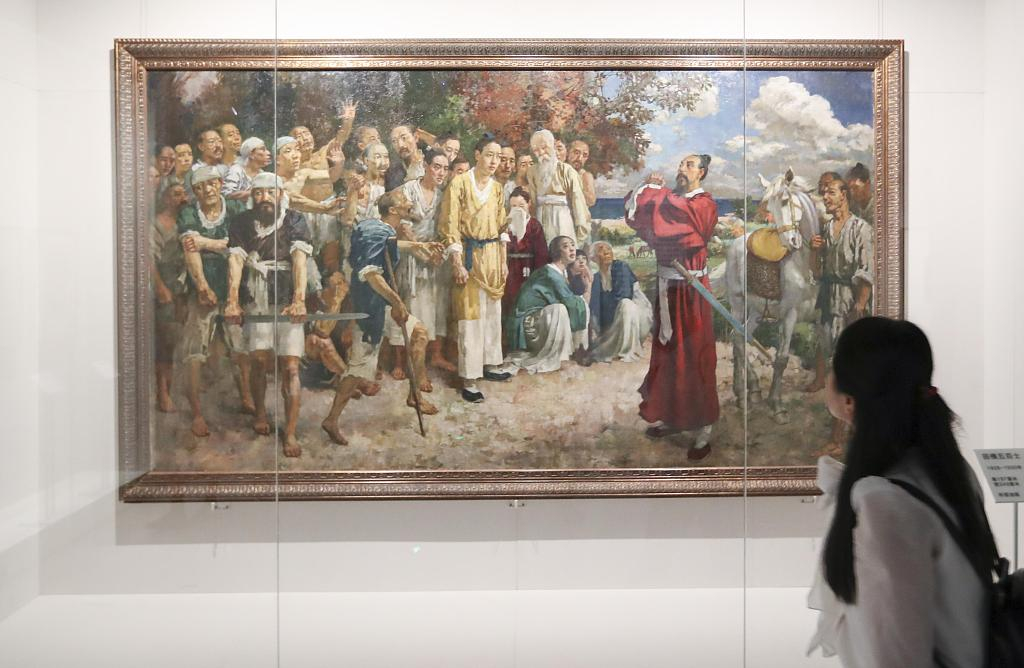
"Tian Heng and his 500 Retainers" by Xu Beihong on display at Xu Beihong Memorial Museum in Beijing, September 17, 2019. /VCG Photo
"Tian Heng and his 500 Retainers" by Xu Beihong on display at Xu Beihong Memorial Museum in Beijing, September 17, 2019. /VCG Photo
Visitors can also take a tour of Xu's former residence, which has also been newly renovated, while enjoying a pictorial summary of the art master's life and career.
The admission to the museum is free.
Pioneer of modern Chinese painting
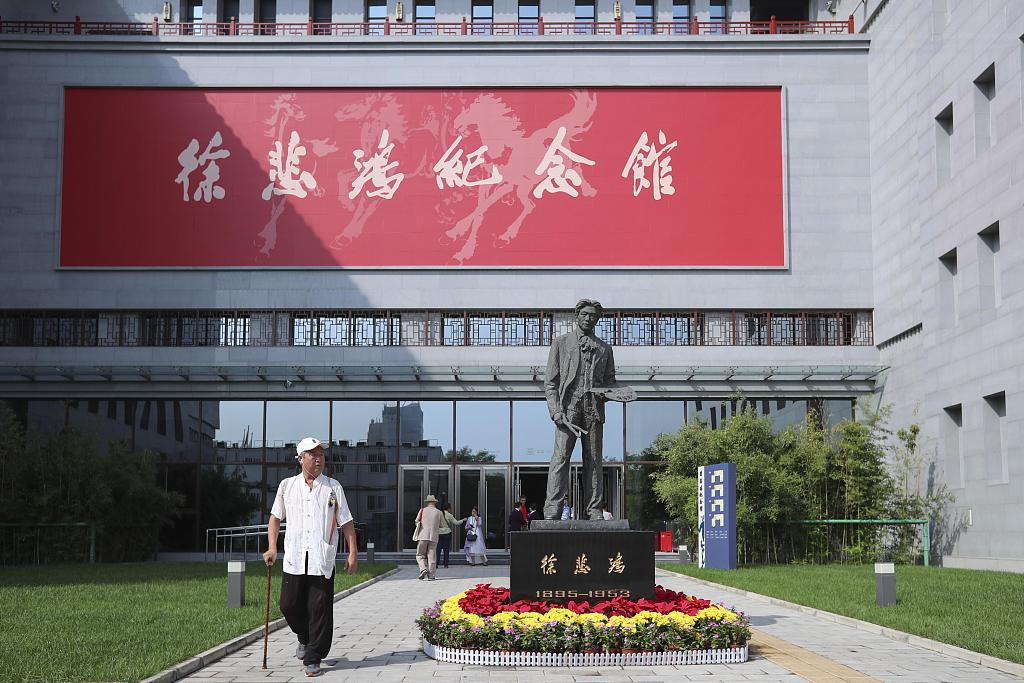
Xu Beihong Memorial Museum in Beijing. /VCG Photo
Xu Beihong Memorial Museum in Beijing. /VCG Photo
Xu, born in 1895, is hailed as the "father of modern Chinese painting" for combining both Oriental and Western styles in his works and mentoring generations of Chinese artists.
The curriculum designed by Xu continues to guide several prestigious Chinese art schools.
After learning Chinese painting and calligraphy from his father, a self-taught painter, Xu spent eight years studying arts in Europe. His diverse education background helped him in creating art works with a well-balanced integration of realism and impressionism.
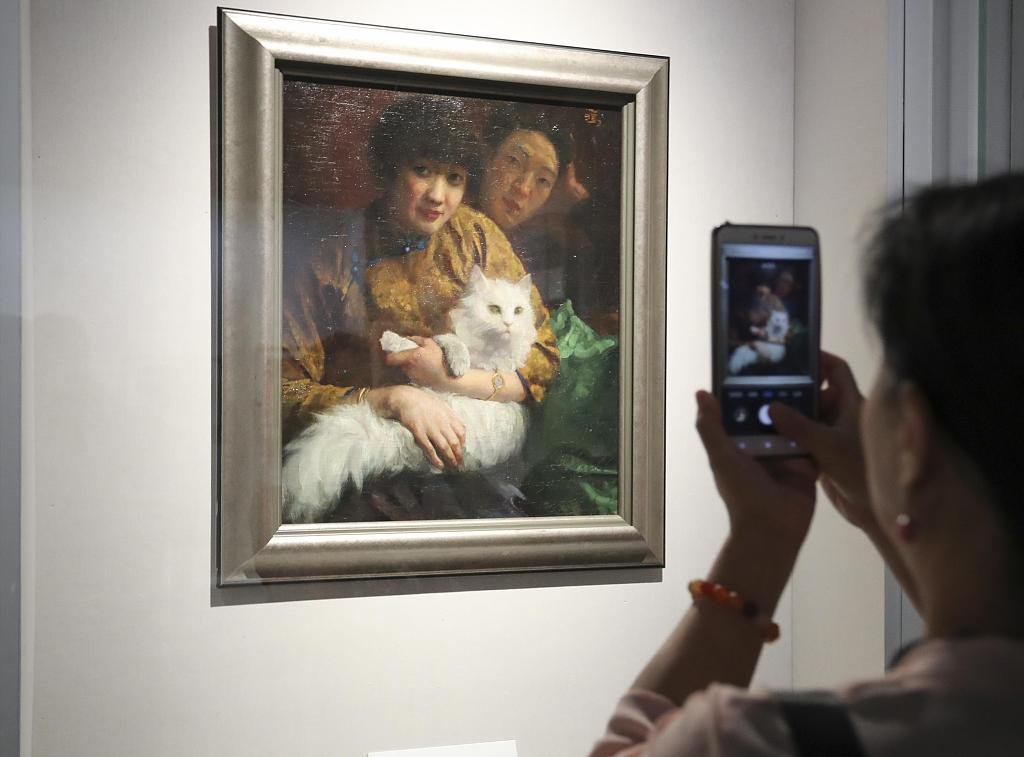
Xu was a master of both oils and Chinese ink. In his three-decade-long career Xu made thousands of oil paintings, traditional Chinese paintings and calligraphic works. Preserving these art treasures is the top priority for the museum.
"Different types of works require different environment for preservation, both in temperature and humidity. We've set up various subareas and installed modern constant temperature and humidity air conditioning systems inside," said Wang Hongying, secretary of the Museum.
An artist with deep patriotism
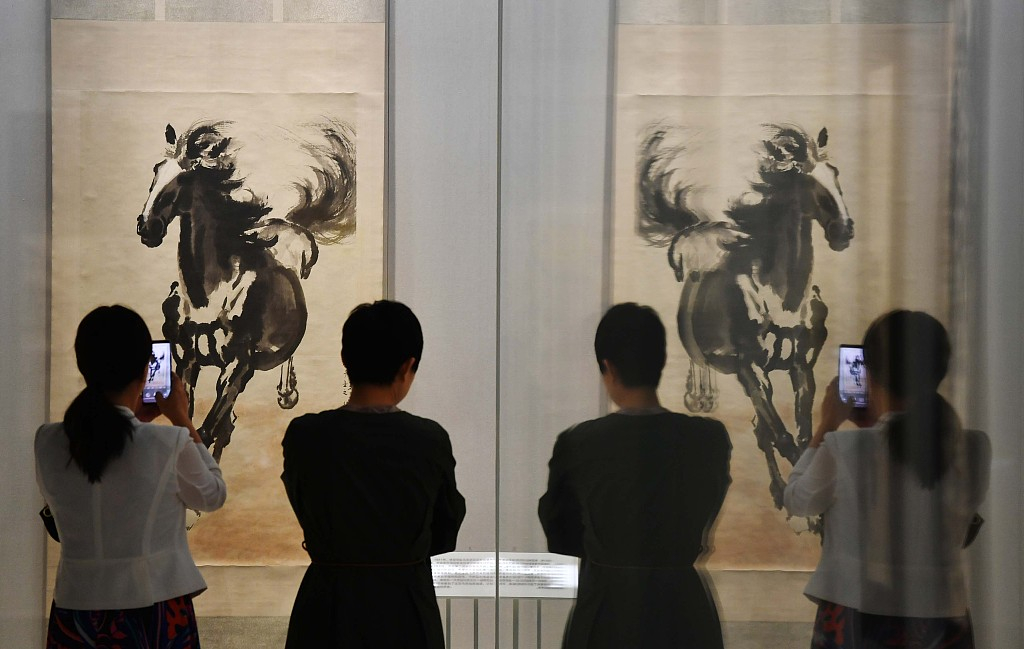
"Running Horse" by Xu Beihong. /VCG Photo
"Running Horse" by Xu Beihong. /VCG Photo
Xu is famous for his paintings of horses, said to capture the mood of China during the early 1900s. Among his iconic works on display, his celebrated wash painting "Running Horse" expresses the artist's deep love and concern for his motherland.
The painting was completed in 1941 when the Japanese occupied the Chinese city of Changsha. According to historians and art experts, the running horse reflects Xu's grief and anger against foreign invasion.
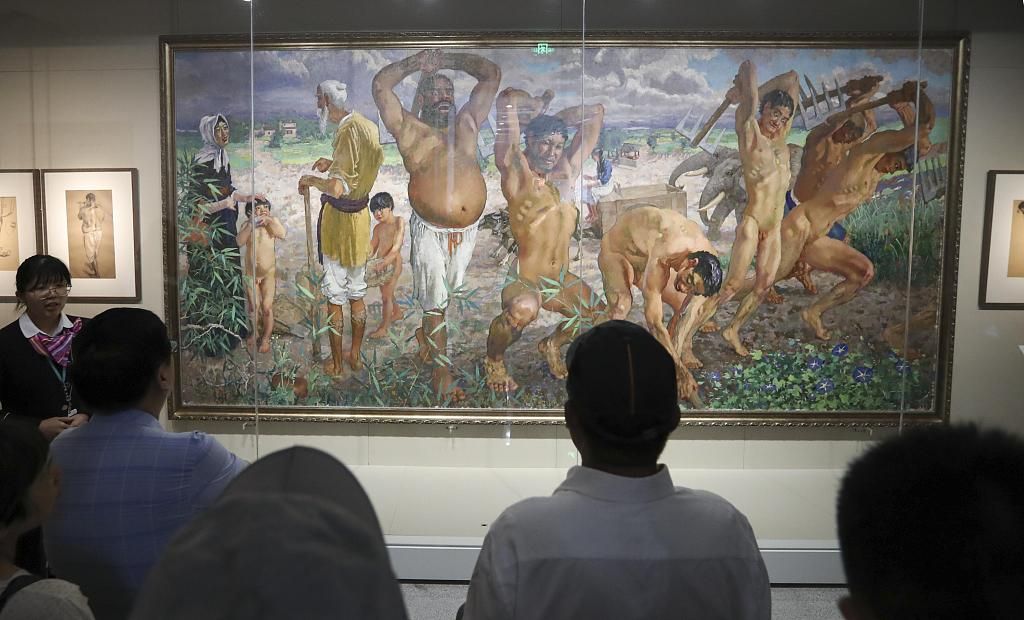
"Silly Old Man Moves a Mountain" by Xu Beihong. /VCG Photo
"Silly Old Man Moves a Mountain" by Xu Beihong. /VCG Photo
Through oil painting "Silly Old Man Moves a Mountain", or "Yu Gong Yi Shan" in Chinese, Xu hoped to showcase the Chinese people's spirit of great perseverance. All characters in the painting are depicted to stand up and fight bravely. It was made in the late 1930s when the Chinese people were fighting against the Japanese aggression. Xu believed that the Chinese people would finally win the war.
Xu died from cerebral hemorrhage at age 58 in 1953. Following his wishes and legal will, Xu's widow donated all his paintings and collections of artifacts to a public museum.
Friendship with Qi Baishi
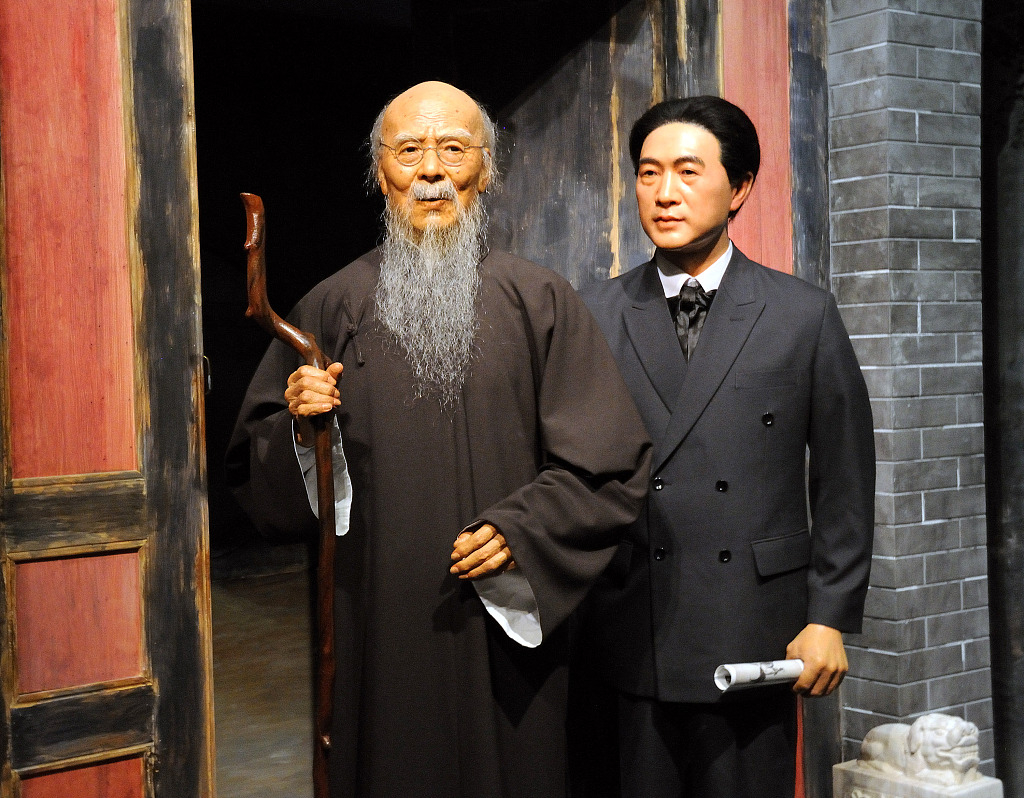
Wax statues of Qi Baishi (L) and Xu Beihou at the National Museum of China in Beijing. /VCG Photo
Wax statues of Qi Baishi (L) and Xu Beihou at the National Museum of China in Beijing. /VCG Photo
The ongoing exhibition also pays tribute to the great friendship between Xu Beihong and Qi Baishi, another celebrated Chinese painter. Qi, born in 1864, is renowned for the whimsical and often playful style of his watercolor works.
A section titled "Great Master in the Eyes of Great Master – Xu Beihong and Qi Baishi" presents over 50 art pieces by the two artists, including some joint works.
(Cover photo designed by Yu Peng)